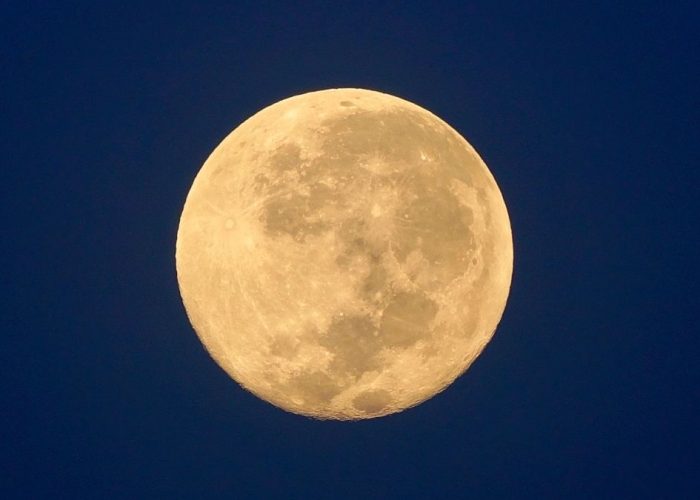This year, trick-or-treating probably doesnt look like you thought it would, and Halloween parties are (hopefully, in the name of public health) cancelled, but theres still something pretty spectacular going on tonight. Best of all, its free and you can probably see it from your own backyard (or fire escape). Not only is there a rare Blue Moon tonight, but theres also the possibility of spotting Mars, Jupiter, Saturn and Uranus. Heres where and when to find them.
Where and when to find the moon and planets
First things first: the moon will not actually be blue. But, for a brief periodas it rises above the eastern horizonit will be orange, which is even more appropriate given the holiday. So when exactly will that happen? It depends on where you live, but you can check on that here. In New York City, for example, moonrise will be at 6:13 pm tonight.
According to Jamie Carter at Forbes, heres where to look:
Look east as the Sun sets in the west. In practice you wont see the full Moon appear until about 10-15 minutes after the moonrise time because of atmospheric cloud low on the horizon and other obstructions.
What about those planets? Mars will be in the southeast sky, where itll be the brightest thing up there, after the moon. Next up: Saturn and Jupiter. Theyll be the two bright dots dancing next to each other to the west, Nicholas St. Fleur writes for the New York Times. Jupiter will outshine its ringed cousin and be the brightest non-moon object on this half of the sky. Plus, if youre able to get up before sunrise on Sunday morning, youll also be able to see Venus and possibly Mercury below it.
And finally, theres Uranus. Youre going to need a telescope for this one, and the planet will look like a small blue-green disc. Heres where to find it, courtesy of Michele Debczak at Mental Floss:
Spotting Uranus at opposition will be slightly more difficult in 2020 than in years past. The phenomenon coincides with a full moon that will make dimmer stars and planetsincluding Uranusharder to see in the night sky. The planet sits in the constellation Aries, which regrettably appears close to the moon for most of the night.
Fingers crossed for clear skies!read more
How to Spot Tonight’s Halloween Blue Moon & A Few Planets, Too


